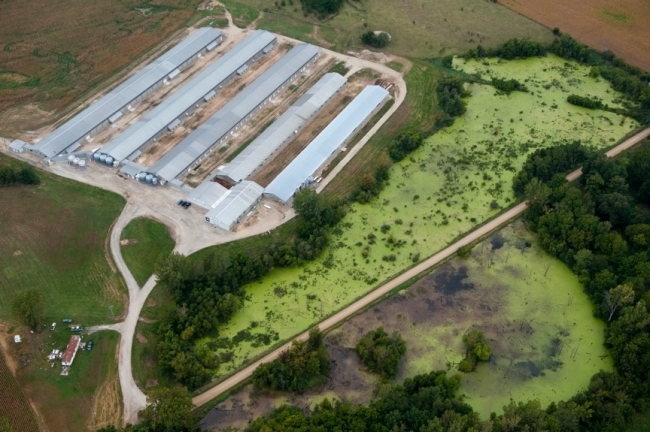Indirect Nitrate Analysis
Many different methods are used to determine the quality of water. The chemical characteristics of water are often indicated by their observed reactions. Such as: lathering of soap is difficult in water with low hardness; the oxidation of iron gives water a red color; or how slightly acidic water dissolves a limestone rock.
Indirect measurements of water quality can be other forms as well. The gathering of information derived from qualitative observations of ecosystems around sources of water is one method. Information in the form of aerial or satellite photography can indicate a plume of pollution in ground and surface water. Examining trends of dead plants or discolorations of soil/water compared to surrounding areas could ascertain the negative effects of pollution. The landscape surrounding a stream can determine things like the amount of trees and shrubs along a stream, the amount of shade that is created by trees overhanging the stream, and woody debris in the stream. The more vegetation, tree cover, and woody debris, the more habitat is created for wildlife and fish. Vegetation can even trap pollutants before they enter the stream. Tree cover also helps regulate water temperature, which is important to fish that need cold water to survive. Eutrophication in lakes and streams is an indicator of high amounts of nutrients and be visually determined by the amount of algae suspended in water or on shorelines. Furthermore, turbidity is a form of indirect measurement, which is caused by suspended solids in water. Measured using a Turbidimeter, light is passed through a sample and the amount of light dispersed is an estimate of the concentration of suspended solids.
All of the previous methods can be related to distinctions based on quality or qualities observed around a single family household well to possible nitrate contamination. One example of indirect nitrate analysis comes from the Washington Department of Fish & Wildlife, “Compiled White Paper for Hydraulic Project Approval Habitat Conservation Plan (HCP).” In this journal, altered nutrient and pollutant loading are activity-specific effects of water quality that may interfere with natural processes. Beneath and alongside a stream bed, interactions with shallow ground water and surface water occur, call the hyporheic zone.
Some studies have shown the hyporheic zone to function as a nitrate sink (Lefebvre et al. 2005; Sheibley et al. 2003) while others have indicated that the hyporheic zone is a source of nitrate (Fernald et al. 2006) and soluble reactive phosphorus (Fernald et al. 2006; Lefebvre et al. 2005). What seems evident from the literature is that the hyporheic zone is a dynamic system with biogeochemical properties that vary from site to site and season to season. Anbutsu et al. (2006) monitored interstitial water nutrient concentrations in a high residence time hyporheic zone and noted that the area was a sink for ammonium, nitrate, and phosphorus. Sheibley et al. (2003) noted that when the groundwater is enriched in ammonium, biogeochemical transformation within the hyporheic zone will convert the ammonium to nitrate and also convert a portion of this nitrate to nitrogen gas. And finally, Lefebrve et al. (2005) noted that organic material decomposition deep within the hyporheic zone can act to release ammonium and soluble reactive phosphorus while periphyton near the surface will retain nitrate. 1
The information collected from Washington Department of Fish and Wildlife conveys that when nitrate contamination is present in agricultural run-off, and allowed to reside in the mixing-zone of surface and ground water, natural processes remove nitrate before it has a chance to contaminate ground water. Changes in this natural process can be observed through temperature variations, suspended solid loads, or altered dissolved oxygen levels.
References
1 Washington Department of Fish and Wildlife. Compiled White Papers for Hydraulic Project Approval HCP: Section 7-Direct and Indirect Effects: Water Quality Modifications. (2009).
